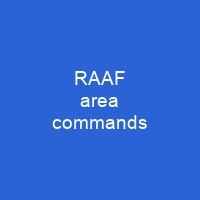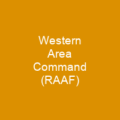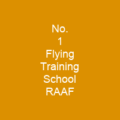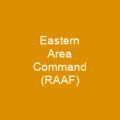Understanding the Evolution of RAAF Area Commands
Imagine a vast, ever-changing landscape where the Royal Australian Air Force (RAAF) navigated through the tumultuous years of World War II and beyond. This landscape was not just physical but also organizational, with area commands serving as pivotal points in this dynamic environment. Let’s delve into how these area commands shaped the RAAF during a critical period of its history.
The Birth and Early Years
How did the RAAF respond to the challenges posed by World War II? In 1940, as the world was engulfed in conflict, the RAAF established four area commands: Southern Area, Central Area, Western Area, and Northern Area. These commands were like the first seeds of a vast garden, each with its own responsibilities for operations, training, and maintenance.
Evolution and Adaptation
As the war progressed, so did the RAAF’s structure. The Central Area was disbanded in 1941, its roles divided among Southern, Northern, and No. 2 (Training) Groups. Western Area maintained a unique role, overseeing training while also managing operations and maintenance within its boundaries. This period of adaptation mirrored the broader changes happening on the battlefield.
Strategic Realignments
Why did the RAAF decide to form No. 1 (Training) Group in Melbourne and No. 2 (Training) Group in Sydney? By mid-1941, it became clear that a more structured approach was needed. These groups were established as semi-geographical, semi-functional units, separate from the area commands but still integral to the RAAF’s operations.
The Pacific War and Beyond
As the war shifted focus towards the Pacific, so did the RAAF’s organizational structure. In December 1941, Northern Area was split into North-Western and North-Eastern Areas to counter Japanese threats. Similarly, Southern Area was subdivided in May 1942 due to its vast size. These changes were not just about geography but also about ensuring the RAAF could respond effectively to emerging challenges.
Functional Control Systems
How did the RAAF transition from area commands to a functional control system? By 1953, the area commands had ceded their authority to Home, Training, and Maintenance Commands. This shift was part of a broader effort to streamline operations and improve efficiency. The transition marked a significant change in how the RAAF would organize itself for the future.
The Final Chapter
By 1954, area commands had become relics of a bygone era. They were disbanded or re-designated between 1946 and 1957. The Federal government recognized that the functional command-and-control system was outdated, leading to the proposal for a new structure based on function rather than geography.
A New Era
What did this new era bring for the RAAF? In 1954, Home Command, Training and Maintenance Commands, and Operational Command were formed. These commands assumed control of all operations, training, and maintenance, marking a significant shift in how the RAAF would operate.
The RAAF raised eight area commands over World War II, with five continuing into the 1950s. This journey from area commands to functional commands reflects not just organizational changes but also the evolving nature of warfare itself. As we look back at this period, it’s clear that these changes were necessary for the RAAF to adapt and thrive in a rapidly changing world.

The evolution of the RAAF’s organizational structure during World War II and beyond is a testament to its adaptability and resilience. As we continue to navigate our own challenges, these lessons from history remind us that flexibility and innovation are key to success.
You want to know more about RAAF area commands?
This page is based on the article RAAF area commands published in Wikipedia (retrieved on November 30, 2024) and was automatically summarized using artificial intelligence.







